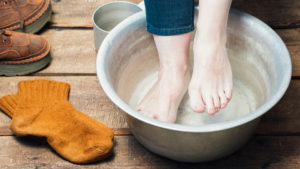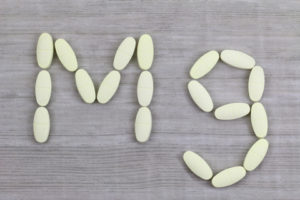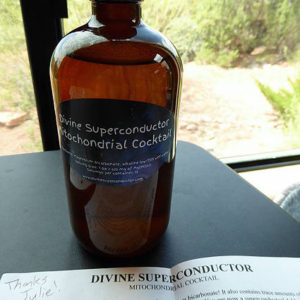 Morley Robbins of gotmag.org has a wonderful guide How to Restore Magnesium in 3 Steps. I’ve summarized the article below into a simple checklist and added some of my own wisdom for those looking to increase the magnesium levels in their red blood cells and mitochondria.
Morley Robbins of gotmag.org has a wonderful guide How to Restore Magnesium in 3 Steps. I’ve summarized the article below into a simple checklist and added some of my own wisdom for those looking to increase the magnesium levels in their red blood cells and mitochondria.
1. STRESS
Stress of all kinds depletes magnesium so if you are being stressed in any way – emotionally or physically (viruses, mold, bacterial infections), heavy metals, high electromagnetic fields, chemical exposures, etc. – you may need to increase your magnesium uptake. If at all possible, look to reduce all sources of stress in your life (easier said than done, I know).
2. KNOW YOUR CURRENT MAGNESIUM LEVELS
You can get tested to see the current magnesium stores in your red blood cells by doing a $49 MagRBC blood test by LabCorp or by doing the NutrEval FMV® test by Genova Diagnostics through your physician which should be covered by Medicare/insurance (check with your provider) and will give a wide range of information for many nutrients, not just magnesium.
3. HOW TO INCREASE MAGNESIUM
 • DIET – Eat magnesium-rich foods like kelp, oysters and other seafood, wild rice, black beans, yogurt or kefir, leafy greens like collards, kale, spinach, and beet + mustard greens, cashews, almonds, and pistachio nuts, and pumpkin seeds, avocado, figs, dark chocolate (with 80% or higher cacao content), and banana. If you are eating a low histamine and/or low oxalate diet, please make sure to avoid any contraindicated foods found on this list.
• DIET – Eat magnesium-rich foods like kelp, oysters and other seafood, wild rice, black beans, yogurt or kefir, leafy greens like collards, kale, spinach, and beet + mustard greens, cashews, almonds, and pistachio nuts, and pumpkin seeds, avocado, figs, dark chocolate (with 80% or higher cacao content), and banana. If you are eating a low histamine and/or low oxalate diet, please make sure to avoid any contraindicated foods found on this list.
BECAUSE OF MINERAL DEPLETION OF OUR SOILS, IT’S IMPOSSIBLE TO GET ADEQUATE MAGNESIUM FROM DIET ALONE SO PLEASE ADD ONE OR MORE OF THE FOLLOWING:
• MAGNESIUM MINERAL DROPS – Put concentrated mineral drops in your water daily. Recommended brands include: Andersen’s Low-Sodium Sea M.D. and Trace Minerals Research Mega-Mag
 • MAGNESIUM OIL FOOTBATHS – Do a magnesium oil footbath 3-7x week to replenish severe magnesium deficiencies rapidly. Just put 1-2 oz of the magnesium oil in hot water to cover your toes in a small foot basin and soak for about 20 minutes. An alternative if you prefer not to do foot baths would be to use a magnesium oil spray on your skin or to rub some of the magnesium oil directly onto your skin.
• MAGNESIUM OIL FOOTBATHS – Do a magnesium oil footbath 3-7x week to replenish severe magnesium deficiencies rapidly. Just put 1-2 oz of the magnesium oil in hot water to cover your toes in a small foot basin and soak for about 20 minutes. An alternative if you prefer not to do foot baths would be to use a magnesium oil spray on your skin or to rub some of the magnesium oil directly onto your skin.
• EPSOM SALT OR MAGNESIUM CHLORIDE BATHS – Put 1-2 cups of pure pharmaceutical grade Epsom Salts (magnesium sulfate) + 1 cup of food-grade baking soda (not baking powder) in a hot tub full of chlorine-free water and soak for 30-40 minutes at least 1x a week. I personally use 3 scoops of magnesium chloride salts with some tolerated essential oils in my baths and in the colder months, I tend to take one almost every day. If you’ve never done these before, it’s a good idea to start slow and use a smaller amount of salts, soaking for just 5 to 10 minutes to see how you do. As far as I know, magnesium sulfate salt baths are safe for those with sulfation issues – in fact, most people do well with Epsom salts because the form of sulfur in the Epsom salts is already sulfate and readily available to the body. If you know you have sulfation issues, I would check with your doctor just to be sure.
 • MAGNESIUM SUPPLEMENTS – Morley recommends taking a bio-available magnesium supplement every day based on the results of your magnesium blood test (see item number 2 in this list, above). His top recommended magnesium supplement contains the co-factor vitamin B6: Jigsaw Magnesium w/SRT. They also make a version free of B vitamins for those that prefer to take their B’s separately: Jigsaw Magnesium w/SRT (B-FREE). When taking synthetic supplements like these, it is best to know if you are able to break down B vitamins or if you have genetic mutations that require you to take the methylated versions. One way to get tested is to do the 23andme.com test and then submit the raw data to MTHFRsupport.com to get their variant report.
• MAGNESIUM SUPPLEMENTS – Morley recommends taking a bio-available magnesium supplement every day based on the results of your magnesium blood test (see item number 2 in this list, above). His top recommended magnesium supplement contains the co-factor vitamin B6: Jigsaw Magnesium w/SRT. They also make a version free of B vitamins for those that prefer to take their B’s separately: Jigsaw Magnesium w/SRT (B-FREE). When taking synthetic supplements like these, it is best to know if you are able to break down B vitamins or if you have genetic mutations that require you to take the methylated versions. One way to get tested is to do the 23andme.com test and then submit the raw data to MTHFRsupport.com to get their variant report.
 • MAGNESIUM CO-FACTORS – Did you know? It’s important to get adequate amounts of vitamin B6, boron and magnesium bicarbonate while taking magnesium. Here’s why:
• MAGNESIUM CO-FACTORS – Did you know? It’s important to get adequate amounts of vitamin B6, boron and magnesium bicarbonate while taking magnesium. Here’s why:
– Vitamin B6 helps get magnesium INSIDE the cell
– Boron helps KEEP magnesium inside the cell (usually contained in concentrated mineral drops like Anderson’s Sea M.D. or Mega-Mag by Trace Minerals Research as recommended above under MAGNESIUM MINERAL DROPS).
– Magnesium bicarbonate helps get magnesium inside the MITOCHONDRIA (learn how to make a mag bicarb mitochondria cocktail)
• VITAMIN BEE – If you are able to eat bee products like honey, bee pollen, and royal jelly, they contain a spectrum of B vitamins – including magnesium co-factor vitamin B6 – and can be a great addition to your diet. I recently heard about making bee bread, which is fermented bee pollen and the form that the bees actually eat their pollen. The simple way to make it is by mixing no more than 1 part honey to 4 parts bee pollen in a clean, dry glass jar. You can add powdered herbs like shilajit as well, if you wish. Mix well and turn the jar upside down until the pollen rises to the top, then flip every few hours, at least twice a day. After a week or so the honey will get darker and thicker and have some of the pollen taste throughout and be ready to be eaten. Here are some videos on how to make it: making bee bread | one week later | adding to bee bread. There are many more videos online with instructions on how to make bee bread if you do a search. Here is an article on how to make a more complicated version: making real bee bread. Of course, you can always do a search online to buy it already made.
• ELECTROLYTE BALANCE – Take this adrenal cocktail 1-2x day away from food to support your adrenals. It’s made with 3 simple ingredients: 4 oz of fresh squeezed orange juice, 1/4 tsp cream of tartar or potassium bicarbonate, and 1/4 tsp of fresh ground Real Salt or sea salt. Drink around 10am and make another batch (or make 2 batches in the morning) to drink around 3pm.
A huge thank you to Morley Robbins for providing much of the above information for free on his invaluable website gotmag.org.










0 Comments